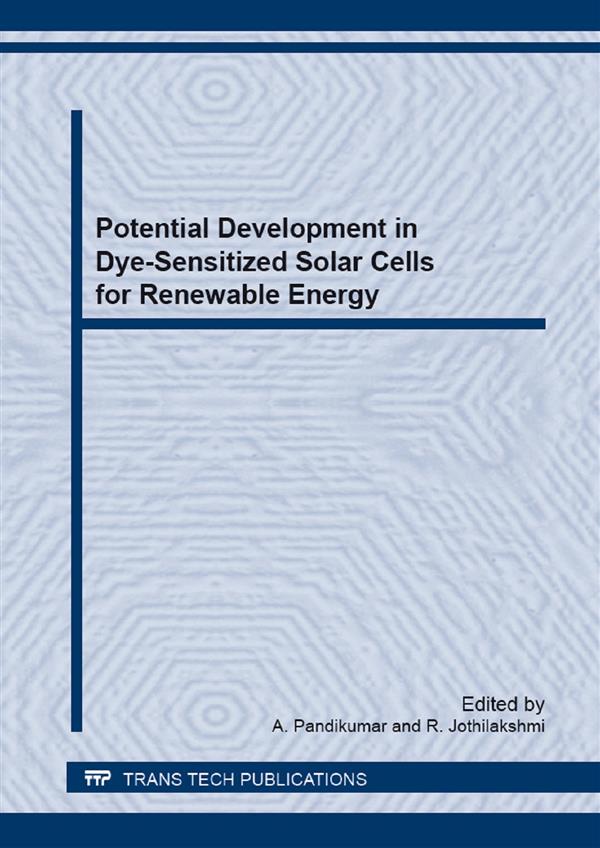Engineering Research
Materials Science
Engineering Series
Potential Development in Dye-Sensitized Solar Cells for Renewable Energy
Description:
The development of photovoltaic technology is expected to solve problems related to energy shortages and environmental pollution caused by the use of fossil fuels. Dye-sensitizedsolar cells (DSSCs) are promising next-generation alternatives to conventional silicon-based photovoltaic devices owing to their low manufacturing cost and potentially high conversion efficiency. This special topic volume addresses recent advances in the research on dye-sensitized solar cells. The focus of this special topic volume is on materials development (sensitizers, nanostructured oxide films, and electrolyte), but commercialization. This work illustrates a new pathway to achieve highly efficient DSSCs for practical applications.
Purchase this book:
Info:
Review from Ringgold Inc., ProtoView:
Physicists and material scientists and engineers summarize some recent developments in using dye-sensitized solar cells (DSSC) to achieve higher efficiency, focusing on components of the cells. Among the topics are dye sensitized solar cells using natural dyes as chromophores, mesoporous photo-anodes for dye-sensitized solar cells, the effect of nanograss and annealing temperature on dye-sensitized solar cells based on titania nanotubes, an electrochemical impedance spectroscopic study of dye-sensitized solar cells sensitized with </Begonia malabarica/> Lam., and the positron annihilation characterization of titania-doped polystyrene.

